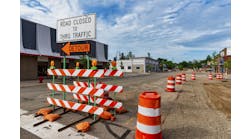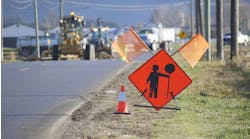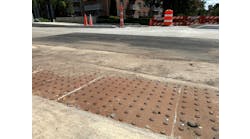We’ve all heard the saying a picture is worth 1,000 words, even if it’s unclear who determined that value proposition. No one has determined the universal value of a video yet, but for the Melrose Park (Ill.) Police Department, it’s apparently $100.
That was the price of the ticket I got for rolling a red light on a right turn late one night this past summer. Unbeknownst to me, the intersection was monitored by a red-light camera. The inconvenience of the ticket aside, I have to wonder how much of the enforcement is safety-related. It’s an issue that made headlines here in the Chicago area this past December.
The Chicago Tribune released the results of a scientific study it had commissioned into the city’s red-light camera program and the safety benefits it provides—or doesn’t, as it turns out. City officials had claimed that the cameras were reducing the number of intersection crashes, particularly right-angle or “T-bone” crashes. The Tribune study did find that T-bone crashes dropped 15% in that time period—Mayor Rahm Emanuel, in perfect Chicago political spin, claimed the number was 47%—but rear-end crashes rose 22% in the same period.
The Tribune’s findings are consistent with other scientific studies of red-light camera programs in the U.S., with right-angle crashes going down and rear-end crashes going up. Supporters of the cameras argue that right-angle crashes are the more important number, as they’re generally considered more damaging, so the net result is still positive.
Chicago did not see that net positive, however, as total crashes went up 5% in the study period. Then again, the city admittedly used “more basic” investigative methods than the Tribune, which experts say didn’t account for factors like improved safety of vehicles or changes in state accident reporting standards. Compounding the problem, city officials admitted that they shortened the length of yellow lights in 2014 to just below the 3-second federal minimum, a measure that resulted in 77,000 more violations and $7.7 million in ticket revenue. In total, the 350 cameras across the city have brought in more than $500 million in revenue since 2002.
So it sure seems like the program is doing more good for the city’s coffers than its citizens. Not helping their case—the Tribune study found that injury-causing crashes were considered rare at a whopping 40% of the intersections where cameras were deployed.
Perhaps most telling, however, are the results of a 2005 Federal Highway Administration study, cited in the Tribune article, which reported nearly identical crash numbers to the 2014 effort.
Many municipalities are getting rid of their red-light cameras—the Insurance Institute for Highway Safety reported a 6% decrease in camera use by state and local governments between the start of 2012 and the end of 2013, a total of 508 such removals nationwide. This is a trend I believe needs to continue, both in Chicago and elsewhere—and not due to any residual red-light ticket bitterness on my part. Statistically, the cameras appear to be doing more harm than good from a safety perspective, and there are other ways to achieve the desired results.
One course of action may be to lengthen yellow-light times: A 2004 Texas Department of Transportation study found that increasing yellow-light times by one second at 181 intersections dropped accidents by 40% while cutting red-light violations by more than half. Conversely, shortening yellow lights by one second—much like Chicago did—caused crashes to skyrocket 110%. And, ahem, boosted revenues.
This is just one way to achieve the safety results people are looking for without significantly inconveniencing the people you’re trying to protect. It may drive down the value of a video, but who’d raise a fuss? TM&E


